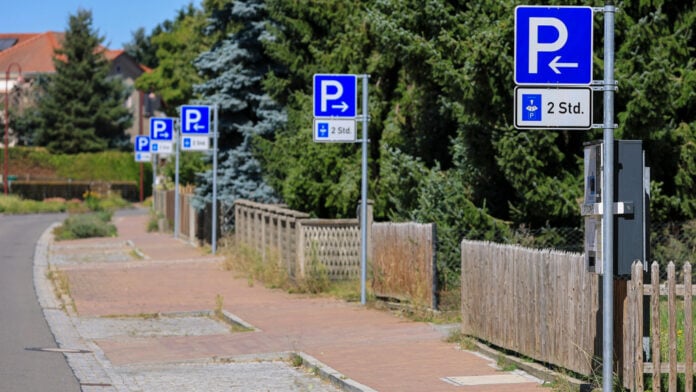“This is not what we signed up for,” expressed a resident of a small village in Saxony, as the community grapples with an overwhelming influx of blue signs. With a population of just 500, the village has become inundated with signage that has transformed its landscape into a chaotic display, leaving many residents feeling frustrated and unheard. The sheer volume of signage has sparked a debate about local governance, community identity, and the balance between regulation and personal freedom. As the villagers navigate this unexpected transformation, they are left questioning the motives behind such decisions and the implications for their daily lives.
The situation has escalated to the point where residents are organizing meetings to voice their concerns. Many feel that the local government has prioritized bureaucratic demands over the well-being of the community. As these blue signs proliferate, they not only clutter the environment but also dilute the village’s charm and character. The residents are now faced with a dilemma: how to reclaim their village from what they see as an unnecessary and overwhelming visual intrusion. This raises important questions about community involvement in decision-making processes and the extent to which local authorities should impose regulations that affect daily life.
The Rise of the Blue Signage Phenomenon
In recent months, the village has seen a remarkable increase in blue signage, which is primarily used for various regulatory purposes, including traffic control and public information. This sudden surge has transformed the once peaceful village into a veritable forest of signs, eliciting mixed reactions from the community. Residents have reported feelings of confusion and frustration as they navigate through this visual maze, which not only disrupts the aesthetic appeal of their surroundings but also complicates daily activities.
Statistics reveal that the number of signs has increased by over 200% in just a year, a figure that has left many residents bewildered. The local government claims that the signs are necessary for safety and compliance with regulations. However, the villagers argue that the excessive signage detracts from their quality of life and diminishes the village’s unique character. As the situation continues to evolve, residents are beginning to take action, demanding transparency and accountability from local officials.
Analyzing the implications of this phenomenon, it becomes evident that the blue signage issue reflects broader themes of governance and community engagement. While regulations are essential for maintaining order, the villagers argue that the current approach lacks consideration for their needs and preferences. This situation serves as a case study in the importance of balancing regulatory requirements with community input, highlighting the necessity for local authorities to engage with residents in meaningful ways.
Community Response and Activism
In response to the overwhelming presence of blue signage, residents have begun to unite in their efforts to reclaim their village. Community meetings have been organized, providing a platform for individuals to voice their concerns, share experiences, and propose solutions. This grassroots activism has fostered a sense of solidarity among residents, who are now more determined than ever to influence local decision-making processes.
During these meetings, residents have discussed various strategies, including petitions to local authorities and proposals for community-led initiatives aimed at reducing signage. Some have even suggested a complete reevaluation of the village’s regulatory framework to ensure that it reflects the values and desires of the community. The enthusiasm and commitment displayed by residents highlight the potential for grassroots movements to effect change, particularly when local governance appears disconnected from the needs of the people it serves.
The implications of this activism extend beyond the village itself, serving as a reminder of the power of community engagement in shaping local policies. As residents continue to advocate for their rights, they are not only addressing the immediate issue of blue signage but also setting a precedent for future interactions between local authorities and communities. This ongoing dialogue underscores the importance of listening to constituents and adapting policies to better serve their interests.
The Future of the Village
As the village grapples with the challenges posed by the blue signage phenomenon, the future remains uncertain. The local government has acknowledged the concerns raised by residents and has promised to review the current signage policies. However, many villagers remain skeptical, fearing that their voices may not be adequately considered in the decision-making process. This skepticism highlights the ongoing tension between authority and community, raising questions about the effectiveness of local governance.
Looking ahead, the village has the opportunity to redefine its relationship with local governance through increased collaboration and transparency. By fostering open communication and actively involving residents in policy discussions, local authorities can work towards creating an environment that reflects the community’s values and aspirations. This collaborative approach could lead to a more harmonious coexistence between regulations and the unique identity of the village.
Ultimately, the blue signage issue serves as a catalyst for broader discussions about community involvement and the role of local government. As residents continue to advocate for their interests, they are not only addressing immediate concerns but also paving the way for a more engaged and empowered community. This situation underscores the importance of ensuring that local governance remains responsive to the needs of its constituents, fostering a sense of belonging and ownership among residents.


